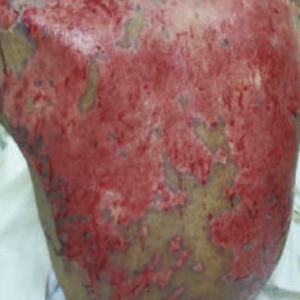Pemphigus vulgaris mimicking Steven-Johnson syndrome/toxic epidermal necrolysis: report of an unusual case
 Smart Citations
Smart CitationsSee how this article has been cited at scite.ai
scite shows how a scientific paper has been cited by providing the context of the citation, a classification describing whether it supports, mentions, or contrasts the cited claim, and a label indicating in which section the citation was made.

Pemphigus vulgaris (PV) is an autoimmune blistering disease affecting the skin and mucosa. It clinically presents as painful erosions, mainly in the oral cavity, and flaccid blisters and erosions on the skin. Steven-Johnson syndrome/toxic epidermal necrolysis (SJS/TEN) is a severe mucocutaneous drug hypersensitivity reaction characterized by painful, dusky, erythematous eruptions that often progress to blisters, erosions, and extensive epidermal detachment accompanied by systemic symptoms. Herein, we report the case of a 48-year-old man who presented with extensive skin and mucosal lesions following the ingestion of an unknown medication. The patient’s symptoms clinically mimicked SJS, and accordingly, a preliminary diagnosis of SJS/TEN was made. However, clinical investigation of skin biopsy and direct immunofluorescence assay results indicated PV, and a final diagnosis of PV was established.





 https://doi.org/10.4081/dr.2023.9649
https://doi.org/10.4081/dr.2023.9649





